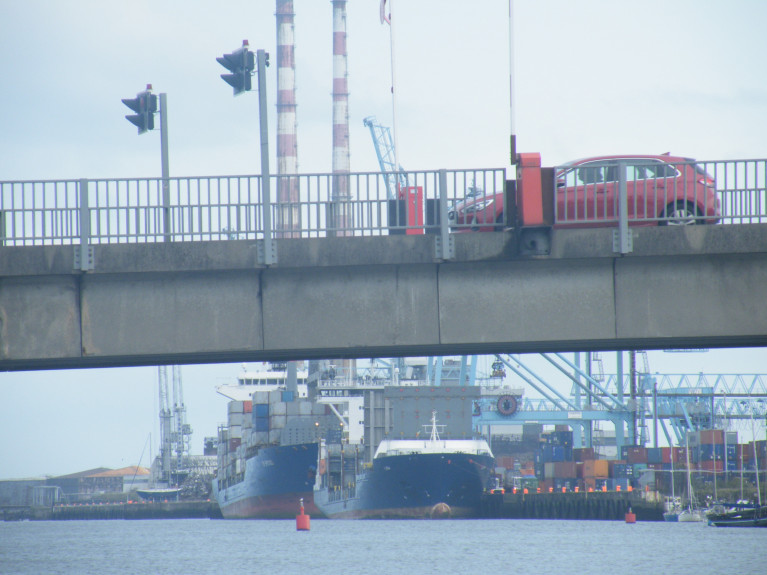As Afloat reported, Dublin Port Company yesterday announced delays to some shipping activity and pilotage due to bad weather that also led to temporary closure for pedestrians to the Great South Wall (until to Wed 24 Feb, at 4am), writes Jehan Ashmore.
Due to the adverse weather conditions, (continued today) this has indeed affected shipping including the temporary closure of Load-On/Load-Off (Lo-Lo) container handling terminals. The high winds has led to health and safety concerns resulting in these closures at the port's three container terminals. DPC is monitoring the situation and updates will be made via social media channels and on dublinport.ie
In addition for further updates on the Great South Wall (click link above) given the rough seas and high-tides.
Since Storm Darcy's recent battering of Dublin Bay, the inclement weather continues today with Met.ie forecasting gale force ranging 8-9. The juristriction of Dublin Bay is under the remit of DPC and as evident of Storm Darcy, that led also to closing the anchorage to shipping as very strong easterly winds make the bay extremely exposed and pose a danger to ships.
The scene was set when Afloat reported on the Dublin Bay Buoy, see (tweeter account) with live weather data. Whereas at one stage this morning, the buoy, part of a MetOcean /Smart Buoy nationwide network (see Irish Lights), recorded south easterly winds with an average of 28knots and gusts reaching 43 knots. While wave heights reached 2.2m.
In more clement weather conditions, ships calling to the port (and those requiring anchorage) use Dublin Bay. This is where DPC has a dedicated anchorage zone which is divided into quandrants. One ship is allocated a quandrant, so 4 ships can be accommodated with DPC charging an anchorage fee based on those exceeding a week's duration.
During the week of Storm Darcy, there was a big ‘fetch’ up the Irish Sea which promoted a large swell on all east coast anchorages. As Dublin Bay was under such adverse weather conditions, this posed issues of space and safety of vessels in relatively close proximity and potential for difficulties in holding ground at anchorage.
Afloat understands that only one ship, a large bulker during the height of Storm Darcy, was at anchor but was forced to depart Dublin Bay and head off of the Kish Bank. While other ships that were arriving to await a scheduled allocated berth time, mostly took up anchorage on the fringes of Killiney Bay. Some ships rode out the weather by running parallel off the coast but further offshore.
A minority of ships however headed across to the other side of the Irish Sea, to north Wales where anchorage took place off Anglesey. This involved to the south off the Lyn Peninsula and also off Moelfre, on the east of Anglesey which afforded more shelter.































































